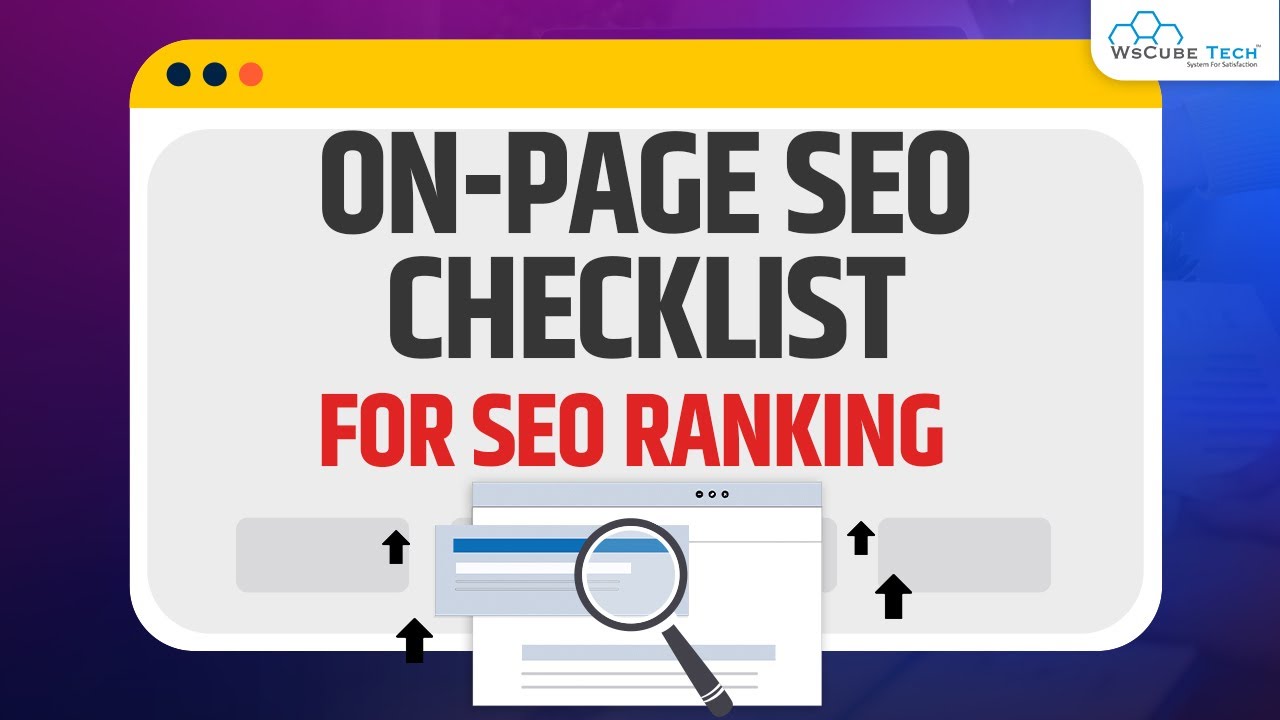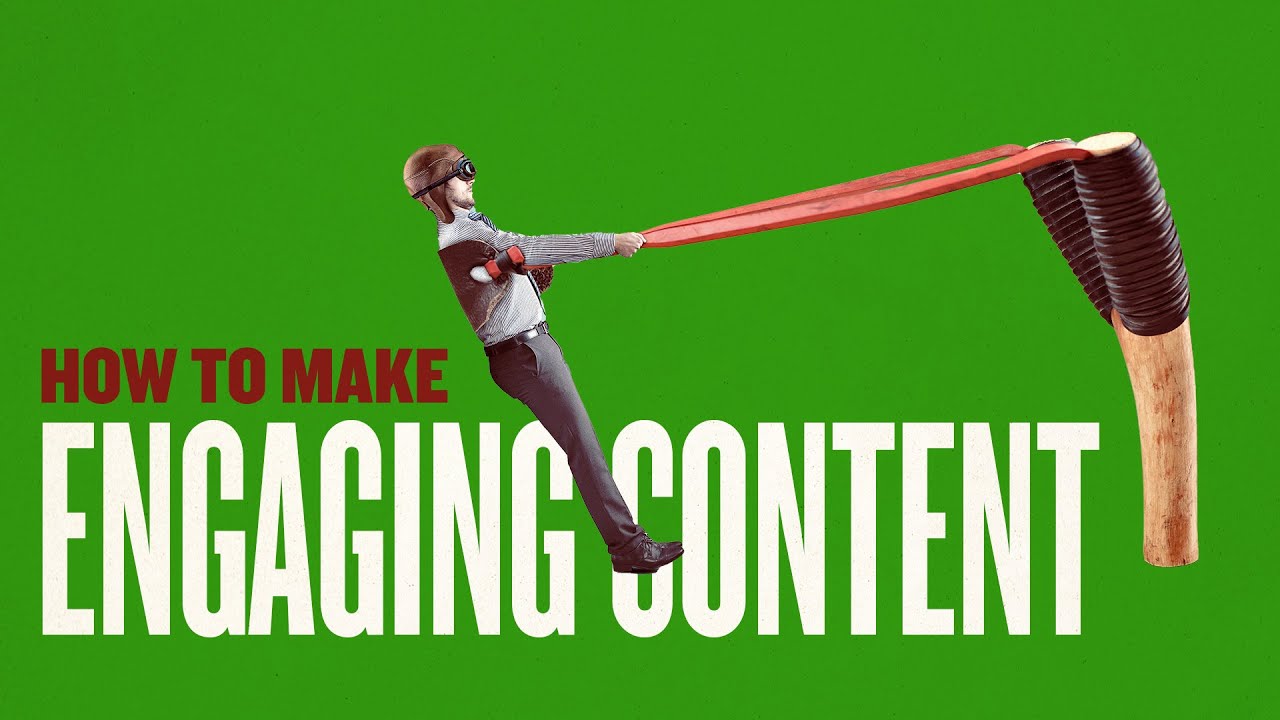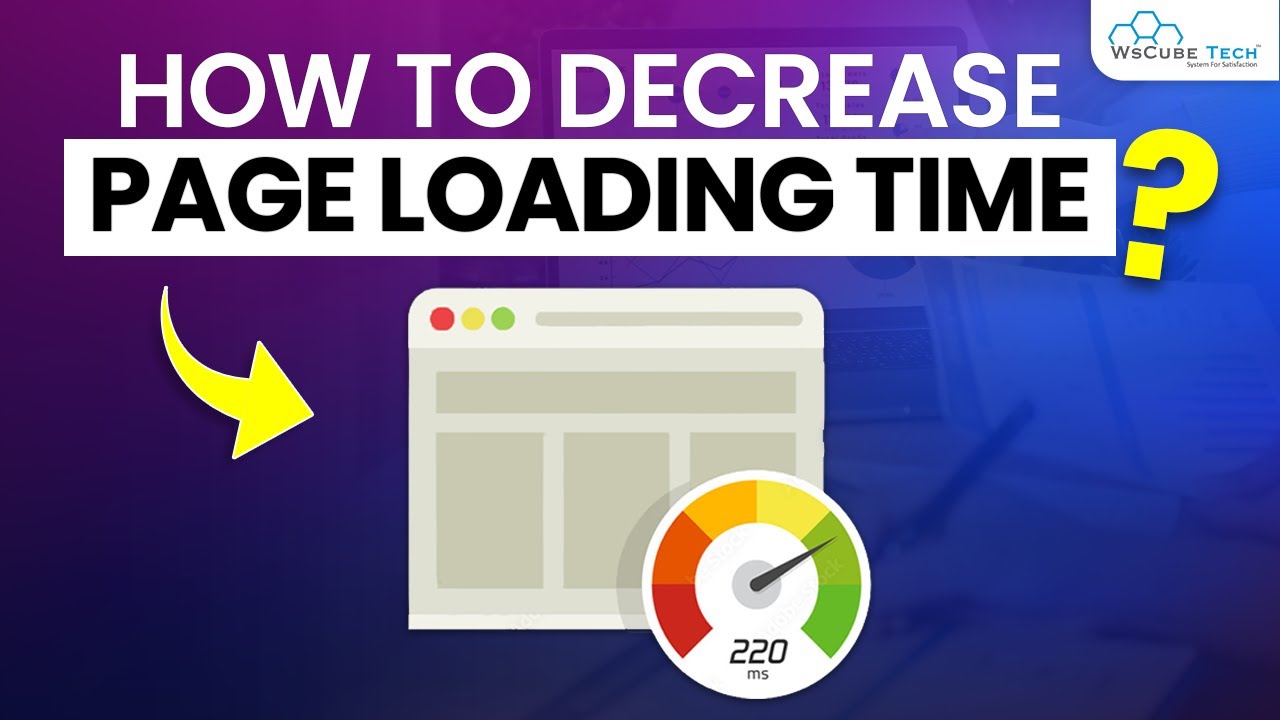In today's highly competitive digital landscape, having a strong online presence is essential for the success of any website. And when it comes to attracting valuable and sustainable traffic, search engine optimization(SEO) plays a crucial role.SEO techniques to grow organic trafficfor search engines, improving their visibility and search ranking.
In this article, we will explore a variety of effective SEOtechniques that can help you grow your website's organic traffic. From keyword research and on-page optimization to creating high-quality contentand building authoritative backlinks, these techniques are designed to boost your website's rankings in search engineresults pages (SERPs) and attract more targeted visitors.
What Is Organic SEO Traffic?

Organic search explained
Organic SEOtraffic refers to the visitors who arrive at your website through unpaid, natural, and organic search engine results. When a user enters a query or keyword into a search engine like Google, Bing, or Yahoo, the search engine displays a list of relevant websites based on its algorithmic calculations. Organic SEO traffic represents the visitors who click on these non-paid search results and land on your website.
Organic SEO traffic is distinct from other sources of traffic, such as paid advertisements or social mediareferrals, which require monetary investments or promotional efforts. Organic traffic is driven by the relevance and quality of your website's content, as well as the effectiveness of your search engine optimization (SEO) strategies. Here are some key characteristics of organic SEO traffic:
- Unpaid and Natural -Organic traffic is generated without direct financial investment. It occurs when users discover your website through search engine results because it is deemed relevant and valuable based on the search query.
- Search Engine Visibility -Organic SEO traffic relies on your website's visibility in search engine results. When your website ranks higher for relevant keywords, it has a greater chance of attracting organic traffic.
- Long-term Sustainability -Organic traffic is considered sustainable because it does not rely on ongoing advertising or promotion. With effective SEO strategies, you can build a steady stream of organic traffic over time.
- User Intentand Relevance -Organic traffic is driven by users' search intent. When users find your website through organic search results, it suggests that your content aligns with their needs or interests.
- Higher Trust and Credibility -Users tend to trust organic search results more than paid advertisements. Achieving high rankings in organic search indicates to users that your website is reputable, authoritative, and valuable.
Does Organic Traffic Help SEO?
Organic traffic plays a significant role in SEO. When users find your website through organic search, it indicates that your website is relevant and valuable to their search queries. This user behavior sends positive signals to search engines, suggesting that your website is authoritative and deserving of higher rankings. There are several ways in which organic traffic helps SEO:
- Improved Search Engine Rankings -When your website receives a steady stream of organic traffic, it indicates to search engines that your content is valuable and relevant. Search engines may reward your website with higher rankings in search results, leading to increased visibility and more organic traffic.
- Increased Trust and Authority -Organic traffic indicates that users find your website trustworthy and valuable. Search engines consider user behavior metrics like click-through rates, time on site, and bounce rates to assess the quality and relevance of your website. Higher organic traffic and positive user engagement can contribute to building trust and authority with search engines.
- Enhanced Keyword Research and Optimization -Analyzing the keywords that drive organic traffic to your website provides valuable insights. By understanding the keywords users are using to find your content, you can optimize your website and create targeted content around those keywords. This helps improve your website's relevance and visibility in search results.
- Opportunities for Conversion and Engagement -Organic traffic consists of users who are actively searching for information or solutions related to your website's content. This presents an opportunity for engagement and conversion. When users find your website through organic search and have a positive experience, they are more likely to engage with your content, subscribe to your newsletters, make purchases, or become loyal visitors.
- Long-term Sustainability -Organic traffic is sustainable and cost-effective compared to paid advertising. By consistently implementing effective SEO strategies to attract organic traffic, you can establish a strong online presence, build a loyal audience, and reduce dependency on paid advertising for driving traffic.
7 SEO Techniques To Grow Organic Traffic

SEO Tips to Improve Organic Traffic in Under 15 Minutes
Conduct Keyword Research

My Favorite Keyword Research Strategy
Keyword research is a crucial step in SEO to identify the right keywords and phrases that your target audience is using to search for information, products, or services related to your website. By conducting keyword research, you can gain insights into the search volume, competition, and relevance of different keywords, allowing you to optimize your website's content accordingly. Here's a step-by-step guide to conducting keyword research:
- Understand Your Target Audience -Start by understanding your target audience's demographics, interests, and preferences. This will help you identify the language and terminology they are likely to use when searching for information in your industry or niche.
- Brainstorm Seed Keywords -Begin with a list of seed keywords that are directly related to your website's content. These can be broad terms that encompass your main topics or products. For example, if your website is about healthy recipes, your seed keywords could include "healthy recipes," "nutritious meals," or "cooking for wellness."
- Utilize Keyword Research Tools -Use keyword research tools like Google Keyword Planner, SEMrush, Moz Keyword Explorer, or Ahrefs Keyword Explorer to expand your list of keywords. These tools provide valuable data on search volume, competition, related keywords, and trends. Enter your seed keywords into the tools and explore the suggested keyword variations and related keywords that are relevant to your content.
- Analyze Search Volume and Competition -Pay attention to the search volume of keywords to identify popular search terms with a reasonable amount of search traffic. Additionally, assess the competition level of keywords to understand how difficult it may be to rank for them. Look for keywords with a good balance of search volume and manageable competition.
- Long-Tail Keywords -Consider incorporating long-tail keywords into your research. These are longer and more specific keyword phrases that typically have lower search volume but can attract highly targeted and relevant traffic. Long-tail keywords often have less competition, making it easier to rank for them. For example, instead of targeting "healthy recipes," you could focus on "easy gluten-free dinner recipes."
- Analyze Competitor Keywords -Study your competitors' websites and analyze the keywords they are targeting. This can provide insights into the keywords that are working well within your industry and help you discover new keyword opportunities.
- Refine and Prioritize Keywords -Refine your keyword list by eliminating irrelevant or low-impact keywords. Prioritize keywords based on relevance, search volume, and competition. Focus on keywords that align with your website's goals and have a good balance between search traffic and attainability.
- Monitor and Update -Keyword research is an ongoing process. Continuously monitor your keyword rankings and adapt your strategy based on changes in search trends, user behavior, and competition. Regularly revisit your keyword research to discover new opportunities and refine your targeting.
Optimize On-Page Elements

On Page SEO Checklist 2023: Optimize Every Page on Your Site (Ultimate Guide)
Optimizing on-page elements is a critical aspect of SEO that involves optimizing various elements on individual web pages to improve their visibility in search engine results and attract organic traffic. By optimizing on-page elements, you can provide search engines with relevant information about your content and improve the user experience. Here are key on-page elements to optimize:
- Title Tags-The title tag is an HTML element that defines the title of a webpage. It appears as a clickable headline in search engine results. Optimize title tags by including relevant keywords, keeping them concise (around 50-60 characters), and making them compelling to attract clicks.
- Meta Descriptions-The meta description is a brief summary that appears below the title tag in search results. While it doesn't directly impact rankings, a well-crafted meta description can influence click-through rates. Write unique meta descriptionsfor each page, including relevant keywords, and provide a clear and compelling summary that entices users to click.
- Headings (H1, H2, etc.) -Use headings (HTML tags H1, H2, H3, etc.) to structure your content and make it more readable. Include your primary keyword in the H1 heading, and use subheadings (H2, H3, etc.) to break down the content into logical sections. This helps search engines understand the structure and relevance of your content.
- URL Structure -Create SEO-friendly URLs that are descriptive, concise, and include relevant keywords. Avoid using long, complex URLs with unnecessary parameters or numbers. A clean URL structure enhances user experience and makes it easier for search engines to understand and rank your web pages.
- Keyword Optimization in Content -Optimize your content by incorporating relevant keywords naturally throughout the page. Focus on the main keyword in the first paragraph, subheadings, and throughout the body of the content. However, avoid keyword stuffing, which can negatively impact rankings.
- Image Optimization -Optimize images by using descriptive file names and alt tags. Include relevant keywords in the alt tags to help search engines understand the content of the images. Additionally, compress images to reduce file size and improve page loading speed.
- Internal Linking -Use internal links to connect relevant pages within your website. This helps search engines discover and crawl your web pages more effectively and improves user navigation. Linking to related content provides additional context and signals to search engines about the relevance and value of your website.
- Mobile-Friendly Optimization - With the increasing use of mobile devices, it's crucial to optimize your web pages for mobile users. Ensure your website is responsive, with a mobile-friendly design and layout. Mobile optimization contributes to better user experience and can positively impact your search engine rankings.
- Page Loading Speed - Improve page loading speed by optimizing images, minimizing code, enabling browser caching, and utilizing content delivery networks (CDNs). A fast-loading website enhances user experience and is a ranking factor considered by search engines.
- Schema Markup-Implement structured data markup (schema markup) to provide additional information about your content to search engines. Schema markup helps search engines understand the context and attributes of your content, enabling them to display rich snippets or enhanced search results.
Create High-Quality And Engaging Content

How to Create Engaging and Relevant Content for Instagram
Creating high-quality and engaging content is a fundamental aspect of SEO that can significantly impact your website's visibility, user experience, and organic traffic. By producing valuable and compelling content, you can attract and retain visitors, establish your authority in your industry, and improve your search engine rankings. Here are some key strategies for creating high-quality and engaging content:
- Understand Your Target Audience -Gain a deep understanding of your target audience, their needs, interests, and pain points. Research their preferences, demographics, and online behavior. This knowledge will help you tailor your content to resonate with your audience and provide them with the information they seek.
- Provide Unique and Valuable Information -Offer unique insights, perspectives, or expertise in your content. Avoid simply rehashing what's already available online. Provide valuable information that answers your audience's questions, solves their problems, or educates them on relevant topics.
- Focus on Relevancy and Context -Create content that is relevant to your target audience and aligns with their interests. Consider the buyer's journey and create content for each stage, from awareness to consideration and decision-making. Tailor your content to the specific needs and interests of your audience at each stage.
- Use Compelling Headlines and Introductions -Grab your readers' attention with catchy and compelling headlines. Your headline should pique curiosity and make them want to click and read further. Additionally, craft engaging introductions that captivate readers from the start and entice them to continue reading.
- Utilize Various Content Formats - Experiment with different content formats to cater to diverse preferences and increase engagement. Incorporate written articles, videos, infographics, podcasts, and interactive content such as quizzes or surveys. Different formats can help convey information in a more engaging and accessible manner.
- Incorporate Visual Elements -Use high-quality images, charts, graphs, and other visual elements to enhance the visual appeal of your content. Visuals not only make your content more visually appealing but also help break up the text, make it easier to understand, and increase shareability.
- Optimize for Readability - Format your content for easy readability. Use subheadings, bullet points, and short paragraphs to make it scannable. Utilize a clear and concise writing style, avoiding jargon or complex language. Consider using different font styles, sizes, and colors to highlight important points.
- Include Engaging Media -Incorporate multimedia elements such as videos, audio clips, or interactive elements to make your content more interactive and engaging. These elements can capture attention, provide additional context, and improve the overall user experience.
- Encourage User Interaction and Feedback -Foster engagement by encouraging readers to leave comments, ask questions, or share their opinions. Respond to comments and interact with your audience to create a sense of community and build relationships.
- Regularly Update and Refresh Content -Keep your content fresh and up-to-date by regularly reviewing and updating it. Add new information, statistics, or examples to maintain relevance. Outdated or irrelevant content can negatively impact your credibility and user experience.
Improve Website Loading Speed

How to Decrease Page Load Time and Improve Site? - 100% Working Tips
Improving website loading speed is crucial for user experience and SEO. A fast-loading website not only enhances user satisfaction but also improves search engine rankings and increases the likelihood of visitors staying on your site. Here are some effective strategies to improve your website loading speed:
- Optimize Image Sizes -Compress and optimize images without compromising quality. Large image files can significantly slow down your website. Use image compression tools or plugins to reduce file sizes before uploading them to your site. Additionally, consider using responsive images that are appropriately sized for different devices.
- Minimize HTTP Requests -Reduce the number of HTTP requests by minimizing the use of external scripts, stylesheets, and fonts. Combine and minify CSS and JavaScript files to reduce file sizes and the number of requests needed to render a webpage.
- Enable Browser Caching -Leverage browser caching by setting appropriate cache headers for your website's static resources. This allows returning visitors to load your site faster as their browsers can store certain files locally. You can set cache directives in your server configuration or utilize caching plugins if you're using a content management system(CMS) like WordPress.
- Enable GZIP Compression -Enable GZIP compression on your web server to compress your website's files before they are sent to a user's browser. This significantly reduces file sizes and speeds up the loading process. Most web servers have built-in GZIP compression support that can be enabled through the server configuration.
- Minimize CSS and JavaScript -Minify and concatenate your CSS and JavaScript files. Minification involves removing unnecessary characters, whitespace, and comments from these files. Combining multiple CSS and JavaScript files into one can reduce the number of requests made by the browser.
- Optimize HTML Markup -Optimize your HTML code by removing unnecessary spaces, line breaks, and comments. Minify your HTML files to reduce their size and improve loading speed. Many online tools or plugins can help you automatically minify your HTML code.
- Reduce Server Response Time -Ensure that your web server responds quickly to requests. Choose a reliable hosting provider with good server infrastructure and performance. Consider utilizing content delivery networks (CDNs) to distribute your website's content across multiple servers globally, reducing the distance between the user and the server.
- Prioritize Above-the-Fold Content -Optimize the loading of above-the-fold content, which refers to the portion of a webpage that is visible without scrolling. Load essential CSS, JavaScript, and content necessary for the initial view before loading other elements further down the page. This gives the perception of a faster loading speed and improves user experience.
- Monitor and Remove Unused Plugins -Regularly review the plugins or extensions used on your website and remove any that are unnecessary or no longer in use. Unused plugins can slow down your website and increase the risk of security vulnerabilities.
- Use a Content Delivery Network (CDN) -Consider using a CDN to deliver your website's content from servers located closer to your visitors. CDNs can significantly improve loading speed by caching and delivering static content efficiently.
Optimize For Mobile Devices

How to Make Your Website Mobile Friendly - Top 5 Steps
Optimizing your website for mobile devices is essential in today's digital landscape, as mobile usage continues to rise. Mobile optimization ensures that your site is accessible, user-friendly, and visually appealing across various mobile devices, such as smartphones and tablets. Here are some key strategies to optimize your website for mobile devices:
- Responsive Web Design -Implement a responsive web design that automatically adjusts the layout and content of your site to fit different screen sizes. This approach provides a seamless user experience across devices and eliminates the need to maintain separate mobile and desktop versions of your site.
- Mobile-Friendly Navigation -Simplify your website's navigation for mobile users. Use clear, concise menus, and consider implementing a hamburger menu (a collapsible menu icon) to save screen space. Ensure that navigation elements are easily tappable, with sufficient spacing between links to prevent accidental taps.
- Readable Font Sizes -Use legible font sizes that are easily readable on smaller screens. Avoid tiny fonts that require zooming or strain users' eyes. Aim for a font size of at least 16 pixels for the body text and adjust headings and subheadings accordingly.
- Optimize Button Sizes -Increase the size of buttons and interactive elements to accommodate finger taps. Users should be able to tap buttons easily without accidentally hitting neighboring elements. Make sure there is enough spacing between buttons to prevent misclicks.
- Compress and Optimize Images -Optimize images for mobile devices by compressing them without sacrificing quality. Large image files can significantly impact loading speed, so it's important to find the right balance. Use formats such as JPEG or WebP and implement lazy loading to load images as users scroll down the page.
- Minimize Content and Simplify Layouts -Streamline your content and simplify the layout to avoid overwhelming mobile users with excessive text or cluttered elements. Prioritize essential information and use concise paragraphs, bullet points, and headings to improve readability and scanability.
- Accelerated Mobile Pages (AMP) -Consider implementing AMP, a framework that creates lightweight and fast-loading web pages specifically designed for mobile devices. AMP optimizes code, prioritizes content loading, and improves overall performance.
- Test Across Different Devices and Browsers -Test your website across various mobile devices, including both iOS and Android platforms, to ensure consistent functionality and display. Check how your site appears on different screen sizes and browsers to identify and fix any issues.
- Reduce Loading Time -Improve loading speed by minimizing the use of external scripts, unnecessary plugins, and heavy animations that can slow down your site. Optimize code, enable caching, and leverage browser caching to enhance performance.
- Use Mobile-Friendly Forms -If your website includes forms, optimize them for mobile by simplifying the input fields and using mobile-friendly form elements like dropdowns or checkboxes. Implement auto-fill options and provide clear instructions to streamline the form completion process.
Build High-Quality Backlinks

How To Build High Quality Backlinks To Rank Higher On Google
Building high-quality backlinks is a critical aspect of SEO that can significantly improve your website's visibility, authority, and organic traffic. Backlinks are links from other websites that point to your site, indicating trust and credibility. Here are some effective strategies to build high-quality backlinks:
- Create Outstanding Content -Producing high-quality, valuable content is the foundation for acquiring backlinks. When you publish exceptional content that stands out from the competition, other websites are more likely to link to it as a valuable resource. Focus on creating unique, informative, and shareable content that naturally attracts backlinks.
- Guest Blogging -Reach out to authoritative websites or blogs in your niche and offer to write a guest post. Guest blogging allows you to showcase your expertise, gain exposure to a new audience, and earn backlinks. Ensure that your guest posts provide valuable information and adhere to the guidelines and quality standards of the target website.
- Broken Link Building-Identify broken links on relevant websites within your industry and offer replacement content. Contact the website owner or webmaster and inform them about the broken link, suggesting your own relevant content as a replacement. This approach provides value to the website owner while earning you a high-quality backlink.
- Build Relationships with Influencersand Industry Experts -Engage with influencers and experts in your industry by sharing their content, mentioning them in your articles, or participating in discussions on social media platforms. Building genuine relationships can lead to opportunities for collaboration and earning backlinks from authoritative sources.
- Social Media Promotion -Promote your content on social media platforms to increase its visibility and encourage sharing. Engage with your audience and industry influencers, and they may link to your content from their websites or social media profiles, providing valuable backlinks.
- Link Outreach -Identify websites that have linked to similar content and reach out to them with a personalized email. Express your appreciation for the link and suggest your content as a valuable addition or alternative. Highlight the unique value your content offers and explain why it would be beneficial for their audience.
- Participate in Online Communities and Forums -Join relevant online communities, forums, and discussion boards where you can contribute valuable insights and engage with users. Include a link to your website in your forum signature or when relevant, but ensure that your participation is genuine and adds value to the community.
- Create Link-Worthy Resources -Develop comprehensive and informative resources such as guides, tutorials, research papers, or industry reports that others would find valuable. When you create link-worthy resources, other websites, and content creators are more likely to link to them as references or citations.
- Get Listed in Directories and Resource Pages -Submit your website to reputable online directories and industry-specific resource pages. Focus on directories that provide genuine value and have a good reputation. Avoid low-quality directories or those that are solely designed for link-building purposes.
- Monitor Your Backlink Profile -Regularly monitor your backlink profile using tools like Google Search Console, Ahrefs, or Moz. Identify any spammy or low-quality backlinks and disavow them to prevent any negative impact on your website's SEO.
Monitor And Analyze Performance
Monitoring and analyzing the performance of your website is crucial for optimizing its SEO efforts and identifying areas for improvement. By regularly monitoring and analyzing key metrics, you can gain valuable insights into your website's performance, user behavior, and SEO effectiveness. Here are some essential steps to monitor and analyze your website's performance:
- Set Up Web Analytics -Install a web analytics tool like Google Analyticson your website to track and measure important metrics. Set up goals and conversion tracking to monitor user interactions, such as form submissions or purchases. Web analytics provides comprehensive data on website traffic, user behavior, and acquisition sources.
- Track Organic Search Traffic -Monitor the organic search traffic to your website. Analyze the number of organic visitors, their behavior, and the keywords they used to find your site. This information helps you understand the effectiveness of your SEO efforts and identify areas for improvement.
- Analyze Keyword Rankings -Track the rankings of your target keywords in search engine results pages (SERPs). Use SEO tools like SEMrush or Moz to monitor your keyword rankings over time. Analyzing keyword rankings helps you assess the impact of your SEO strategies and make adjustments if needed.
- Examine User Engagement Metrics -Assess user engagement metrics such as bounce rate, average session duration, and pages per session. These metrics indicate how users interact with your website and whether they find your content valuable and engaging. High bounce rates or short session durations may suggest issues with content relevancy or user experience.
- Monitor Conversion Rates -Track conversion rates for key actions on your website, such as form submissions, newsletter sign-ups, or purchases. Analyze the conversion rates by traffic source, device type, or specific landing pages. This data helps you identify areas of improvement in your conversion funnel and optimize your website for better conversions.
- Monitor Website Speed and Performance -Regularly check the loading speed and performance of your website using tools like Google PageSpeed Insights or GTmetrix. Slow-loading pages can negatively impact user experience and SEO. Identify areas for optimization, such as image compression, code minification, or server configuration.
- Analyze Referral Traffic -Examine referral traffic to understand which external websites are driving visitors to your site. Identify the quality and relevance of referral sources. This analysis helps you identify potential opportunities for building relationships, partnerships, or further promotion.
- Review Backlink Profile -Analyze your backlink profile to assess the quality and quantity of backlinks pointing to your site. Monitor new backlinks, anchor text distribution, and the authority of referring domains. Identify any spammy or low-quality backlinks that may harm your SEO efforts and take appropriate actions, such as disavowing them.
- Benchmark Competitors -Analyze the performance of your competitors to gain insights into their SEO strategies and identify areas of opportunity. Compare metrics such as organic search traffic, keyword rankings, backlink profiles, and user engagement metrics. This analysis helps you identify gaps and potential areas for improvement in your own SEO efforts.
- Regular Reporting and Analysis -Create regular reports to track and analyze the key metrics mentioned above. Set specific goals and KPIs to monitor your progress over time. Use the insights gained from your analysis to make data-driven decisions and refine your SEO strategies.
Are There Any SEO Techniques That Should Be Avoided?

5 Bad SEO Techniques to Avoid
Yes, there are certain SEO techniques that should be avoided as they can have a negative impact on your website's rankings and overall SEO performance. These techniques are often considered unethical or manipulative and can result in penalties from search engines. Here are some SEO techniques to avoid:
- Keyword Stuffing -Keyword stuffing refers to the excessive and unnatural use of keywords in a webpage's content, meta tags, or hidden text. It is an outdated and frowned upon a practice that can lead to keyword over-optimization and a poor user experience. Instead, focus on creating high-quality content that uses keywords naturally and provides value to your audience.
- Buying or Exchanging Low-Quality Backlinks -Acquiring backlinks from reputable and authoritative websites is valuable for SEO. However, buying or exchanging links with low-quality or spammy websites solely for the purpose of manipulating search engine rankings is a black-hat SEO tactic. Search engines have become increasingly adept at identifying unnatural link patterns, and such practices can result in severe penalties.
- Cloaking -Cloaking involves presenting different content to search engines and users, misleading search engines by showing optimized content while displaying irrelevant or unrelated content to users. This deceptive practice violates search engine guidelines and can lead to penalties or even complete removal from search engine indexes.
- Duplicate Content -Publishing duplicate content on your website or across multiple websites can harm your SEO efforts. Search engines strive to provide unique and relevant content to users, and duplicate content creates confusion. Ensure that each page on your website offers original and valuable information to users.
- Irrelevant or Misleading Meta Tags -Using misleading or unrelated meta tags (title tags, meta descriptions) to attract clicks from search results is not only unethical but also undermines the user experience. Meta tags should accurately reflect the content of the webpage, providing users with a clear idea of what to expect when they visit your site.
- Hidden Text and Links -Hiding text or links on a webpage by using techniques such as white text on a white background or positioning them off-screen is a deceptive practice. Search engines consider this as an attempt to manipulate rankings and can penalize websites that engage in such tactics.
It is important to follow ethical and sustainable SEO practices that focus on delivering value to users and improving the overall user experience. By avoiding these black-hat techniques, you can protect your website's reputation, maintain good standing with search engines, and achieve long-term SEO success.
People Also Ask
How Long Does It Take For SEO Techniques To Generate Organic Traffic?
The time it takes for SEO techniques to generate organic traffic varies depending on several factors, such as the competitiveness of your industry, the quality of your SEO implementation, and the search engine algorithms. Generally, it takes time and consistent effort to see significant improvements in organic traffic.
How Important Is Mobile Optimization For SEO And Organic Traffic?
Mobile optimization is crucial for SEO and organic traffic. With the increasing use of mobile devices, search engines prioritize mobile-friendly websites. Having a responsive and mobile-optimized site improves user experience, increases engagement, and positively impacts your search engine rankings.
Can Social Media Platforms Contribute To Improving Organic Traffic Through SEO Techniques?
While social media platforms themselves do not directly impact organic traffic through SEO techniques, they can indirectly contribute to it. By utilizing social media to promote your content, attract engagement, and build brand awareness, you can increase the likelihood of acquiring backlinks and driving organic traffic to your website.
Conclusion
Growing organic traffic is a continuous endeavor that requires a well-rounded and strategic approach. By implementing the SEO techniques discussed in this article, you can enhance your website's visibility, improve its rankings in search engine results, and attract a steady stream of organic traffic.
Remember, SEO is not an overnight solution. It requires consistent effort, monitoring, and adaptation to stay ahead of the competition. Stay up-to-date with the latest SEO trends and algorithm changes, and be prepared to refine and adjust your strategies as needed.
By investing in solid SEO techniques and focusing on delivering valuable content and a seamless user experience, you can establish your website as a trusted authority in your niche and drive sustainable organic traffic that will contribute to your long-term success.